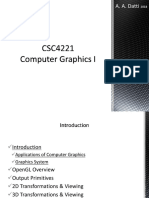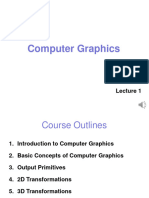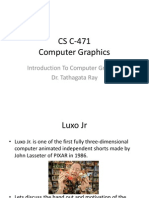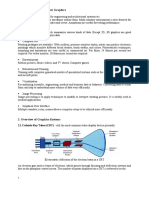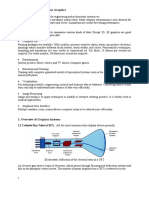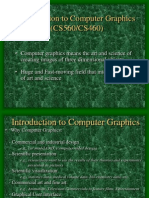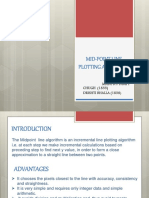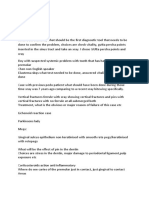0% found this document useful (0 votes)
148 views58 pagesComputer Graphics Systems Overview
The graphics pipeline involves input, computation, and output stages. In the input stage, geometric models are described using vertices and connectivity information. Computation transforms and rasterizes the models. Output involves storing the results in a framebuffer and displaying the image on a raster scan or vector display. Dithering can increase the number of apparent colors when the display lacks enough bits per pixel.
Uploaded by
Meherun Islam TitoCopyright
© © All Rights Reserved
We take content rights seriously. If you suspect this is your content, claim it here.
Available Formats
Download as PPT, PDF, TXT or read online on Scribd
0% found this document useful (0 votes)
148 views58 pagesComputer Graphics Systems Overview
The graphics pipeline involves input, computation, and output stages. In the input stage, geometric models are described using vertices and connectivity information. Computation transforms and rasterizes the models. Output involves storing the results in a framebuffer and displaying the image on a raster scan or vector display. Dithering can increase the number of apparent colors when the display lacks enough bits per pixel.
Uploaded by
Meherun Islam TitoCopyright
© © All Rights Reserved
We take content rights seriously. If you suspect this is your content, claim it here.
Available Formats
Download as PPT, PDF, TXT or read online on Scribd
/ 58











